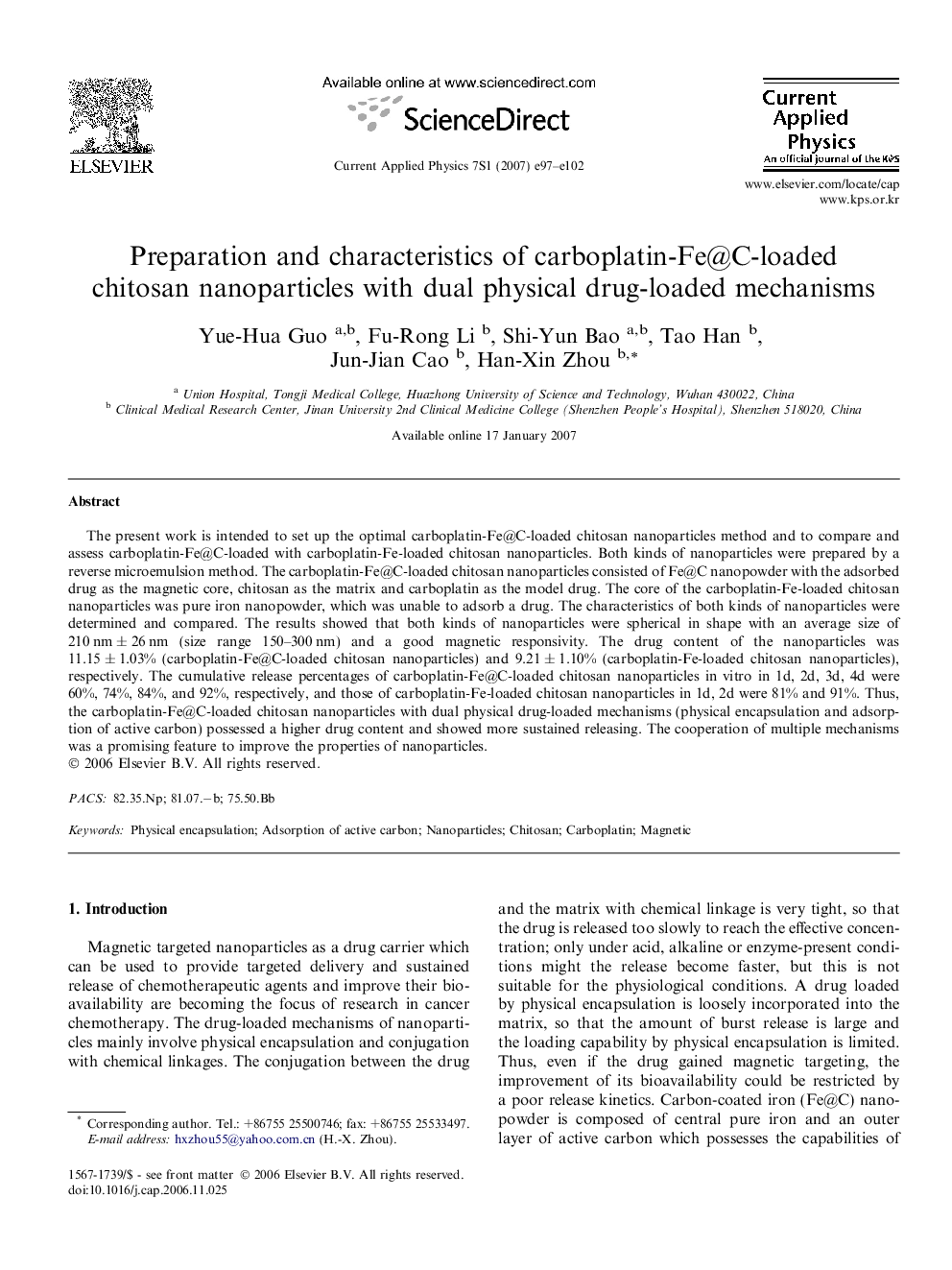| Article ID | Journal | Published Year | Pages | File Type |
|---|---|---|---|---|
| 1789388 | Current Applied Physics | 2007 | 6 Pages |
The present work is intended to set up the optimal carboplatin-Fe@C-loaded chitosan nanoparticles method and to compare and assess carboplatin-Fe@C-loaded with carboplatin-Fe-loaded chitosan nanoparticles. Both kinds of nanoparticles were prepared by a reverse microemulsion method. The carboplatin-Fe@C-loaded chitosan nanoparticles consisted of Fe@C nanopowder with the adsorbed drug as the magnetic core, chitosan as the matrix and carboplatin as the model drug. The core of the carboplatin-Fe-loaded chitosan nanoparticles was pure iron nanopowder, which was unable to adsorb a drug. The characteristics of both kinds of nanoparticles were determined and compared. The results showed that both kinds of nanoparticles were spherical in shape with an average size of 210 nm ± 26 nm (size range 150–300 nm) and a good magnetic responsivity. The drug content of the nanoparticles was 11.15 ± 1.03% (carboplatin-Fe@C-loaded chitosan nanoparticles) and 9.21 ± 1.10% (carboplatin-Fe-loaded chitosan nanoparticles), respectively. The cumulative release percentages of carboplatin-Fe@C-loaded chitosan nanoparticles in vitro in 1d, 2d, 3d, 4d were 60%, 74%, 84%, and 92%, respectively, and those of carboplatin-Fe-loaded chitosan nanoparticles in 1d, 2d were 81% and 91%. Thus, the carboplatin-Fe@C-loaded chitosan nanoparticles with dual physical drug-loaded mechanisms (physical encapsulation and adsorption of active carbon) possessed a higher drug content and showed more sustained releasing. The cooperation of multiple mechanisms was a promising feature to improve the properties of nanoparticles.
